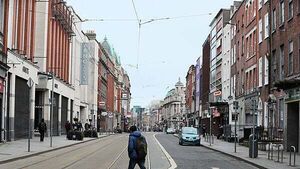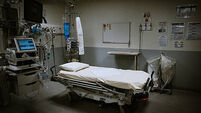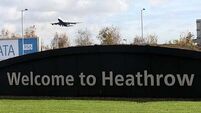Derelict buildings in Dublin city to be made into homes for gardaí and nurses

Eva Osborne
A three-year roadmap has been unveiled to turn empty and derelict buildings in Dublin city into homes for the likes of gardaí, nurses, and teachers.
Middle Abbey Street and North Frederick Street will be part of a pilot that will see property owners given support to regenerate their buildings.
Enforcement action will be taken against those who do not engage.
Speaking on Newstalk, Richard Guiney from business group Dublin Town said the strategy is welcome.
"I'd like to see some commercial use of the ground floor to maintain the footfall, but I've been in plenty of buildings in Dublin city, the likes of Henry Street etc, where you've got 3,000 or 4,000 square foot of unutilised property that could make quite attractive apartments."
The Irish Times reported that the council's “bold urban-rejuvenation pilot” aims to accelerate the provision of cost-rental homes for essential city workers.
Both streets in the north inner city have high levels of vacancy and dereliction, and while some buildings are in council ownership, most are privately owned.
The council will offer supports and incentives to building owners to bring their properties back into use. However, where it encounters “non-co-operative owners”, enforcement will be “prioritised and escalated” up to compulsory acquisition.
The conversion of vacant buildings or unused space above shops into homes for essential workers was one of the 10 “big moves” recommended by the Taskforce for Dublin, the €1 billion plan to revitalise the area around O’Connell Street published last October by then taoiseach Simon Harris.
Essential workers listed in the report included healthcare, public transport and council workers, as well as gardaí, teachers and retail and hospitality staff, all deemed essential to the operation of the city but could not afford to live there.
Speaking on Newstalk, Councillor Cian Farrell said the first phase will see a digital map created of the two streets.
"So we've a really good baseline of what's going on in the street, where can we intervene, what buildings, is it occupied, is it activated to its fullest extent, what condition is it in, what planning history is available and what development potential does it have," he said.
"And this is the core of the whole pilot. If we don't have this information, we're kind of throwing darts in the dark."
Lord Mayor of Dublin Ray McAdam also told Newstalk that it has the potential to be replicated across the city, if the pilot was done right.





